Wet Race Set-up
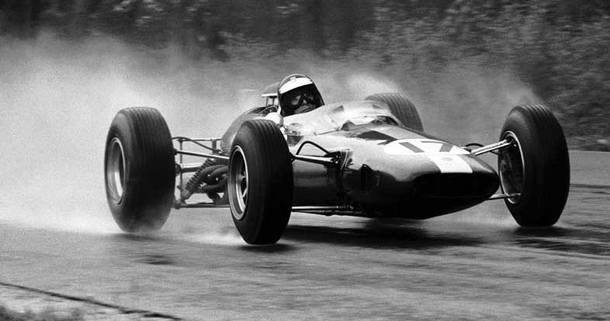
Back in the founding years of Formula 1, it was enough to glance up at the sky. Today, the teams invest a large amount of money and time in the most accurate weather forecasts possible, on which they then base their race strategies. The setup used in qualifying is supposed to remain unchanged for the race, so the engineers and tacticians spend countless agonizing hours trying to forecast the weather. But despite state-of-the-art satellite technology, they are never safe from unpleasant surprises. The approach of a rain front in particular sets off alarm bells with the strategists on the pit wall.
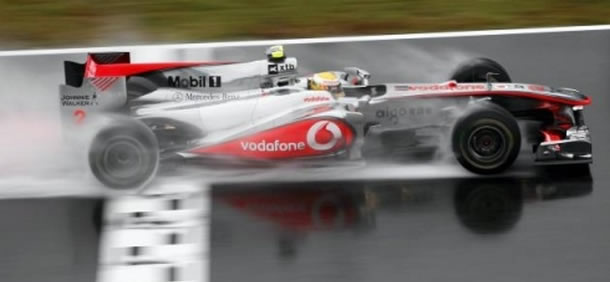
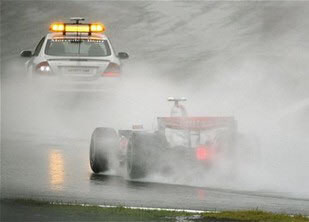 The recommendations of the meteorologists are passed on to their teams’ strategists. If it starts to rain during the race, the drivers have to adjust to impaired visibility and other changed conditions within seconds. How late can I start braking? Should I race around the puddles? And most importantly: how much grip I’m left with? The rubber build-up on track which improves the cars’ grip along the racing line is often washed away when it rains leaving the track "green" as drivers use to say. As a consequence, the cars are more likely to slip and the drivers more likely to make a mistake. Strategists need to determine the difference in lap times amid the changing conditions and then pinpoint the precise moment at which it will make sense to change from dry-weather tires to intermediates or full wets – and vice-versa once the track begins to dry again.
The recommendations of the meteorologists are passed on to their teams’ strategists. If it starts to rain during the race, the drivers have to adjust to impaired visibility and other changed conditions within seconds. How late can I start braking? Should I race around the puddles? And most importantly: how much grip I’m left with? The rubber build-up on track which improves the cars’ grip along the racing line is often washed away when it rains leaving the track "green" as drivers use to say. As a consequence, the cars are more likely to slip and the drivers more likely to make a mistake. Strategists need to determine the difference in lap times amid the changing conditions and then pinpoint the precise moment at which it will make sense to change from dry-weather tires to intermediates or full wets – and vice-versa once the track begins to dry again.
The regulations of Formula 1 offer various options for reacting to rain. If it begins to rain just before the start, for example, the race director can abort the starting procedure, thereby providing the teams with the opportunity to change the tires.
In heavy rain, he can order a flying start following a laps behind the safety car or postpone the start of the race. Should the conditions on the track become too dangerous because it begins to rain, or because the rain becomes heavier, he has the option of sending out the safety car. The teams can then change to intermediates or full wets. If that is not sufficient to ensure the drivers’ safety, the race can be aborted or restarted later.
Engine setup
Problem is that Formula 1 car have so much power and torque and it’s very difficult to get that power down on the track when it’s wet and slippery, especially after 2014 regulation changes and V6 turbo engines. Because the water on the track greatly reduces the traction, it becomes the most important factor. Anything you can do to improve the tire's ability to stay connected to the road surface is done. The engine is retuned to deliver a smoother, less harsh torque to the drivetrain using wet wether engine mapping. With modern engine electronic control units, this is easily done. The engine probably makes less top end power, but the peak power doesn't come on so suddenly, and the risk of the rear wheels breaking loose is reduced. As the top speed of the car will be less than in dry conditions, the gear ratios will need changing too. Usually you have to lengthen your gear ratios in an attempt to reduce wheel spin – less power equals less chance of wheel spin. Driver can also employ a simple technique known as “short shifting.” This involves the driver shifting before the engine peak horsepower is reached, always keeping the car just out of the maximum power.
In addition to all of these, teams will ensure that water cannot get into the electronic systems. This is particularly important after 2009 with the introduction of the KERS and after 2014 introduction of very complex power unit with new ERS systems, where water could act as a conductor between the high voltage systems and the driver.
With optimization of the settings for wet conditions, the teams will be in good shape for the race, unless of course it dries out during the race!
Mechanical and Aero
The grip afforded by the tires is controlled by two parameters; mechanical grip, and aero grip (downforce). Although there is a certain amount of overlap between these two parameters, mechanical grip is generally controlled by the suspension settings. These settings will be established by the engineer based on prior knowledge of the track/car/driver combination, and the anticipated weather conditions.
Rain suspension setup is again compromise. As the car will be traveling slower than in dry conditions, the downforce generated will be proportionately lower, therefore, the engineer will elect to increase the downforce generated by the wings. In the wet, grip is everything. For a full wet setup you should dramatically increase downforce, sometimes as much as 50%. Also, as mentioned, when the ride height was increased, the overall downforce created by underbody and diffuser will be reduced, and the engineer must compensate for this too when deciding on the wing angles.
To stop the car’s chassis from aquaplaning, the ride height will be increased. Be liberal with the ride height, as bottoming in the rain can be catastrophic. Normally, in dry conditions, the cars are seted up to run as close to the track as possible as this makes the underbody aerodynamics work better and also lowers the center of gravity. Problems can occur when Formula 1 car flat undertray hit the water. A large amount of water spray from the tires can be pulled by airstream under the body, and if you ad the water what is already there, effect can be what they call “body aquaplaning”. All car body starts to slide over the layer of the water, like surfing.
Ideally, the engineer would prefer fitting softer suspension springs to increase the mechanical grip, but as it will be necessary to increase the overall downforce, he may well leave the springs as per the dry set-up and only increase wing downforce. However, the shock absorbers (dampers) will need to be softened both in compression, and in rebound.
As the car will not be generating high grip levels on corners, the anti-roll-bar will also be softened. Some teams will disconnect the anti-roll-bars altogether.
Try to keep both of these settings (wing downforce and suspension setup) in proportion to your race setup to keep overall balance intact. In other words, add equal wing front and rear, and soften the front and rear springs by equal amounts. As a result of these modifications, after few laps you’ll need to re-examine the ride height.
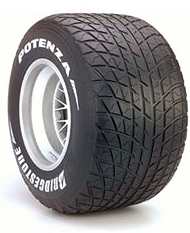 At very high speeds on wide tires, aquaplaning becomes a real concern, and you just have to hit a paddle of water and suddenly you are a passenger. The tread patterns of modern racing tires are mathematically designed to scrub the maximum amount of water possible from the track surface to ensure the best possible contact between the rubber and the track.
At very high speeds on wide tires, aquaplaning becomes a real concern, and you just have to hit a paddle of water and suddenly you are a passenger. The tread patterns of modern racing tires are mathematically designed to scrub the maximum amount of water possible from the track surface to ensure the best possible contact between the rubber and the track.
The intermediate tires are generally used in partially wet conditions, where the driving surface is neither completely dry nor absolutely drenched. They provide moderate assistance in both conditions and are hence favored when half the circuit is experiencing rain and the other half remains dry.
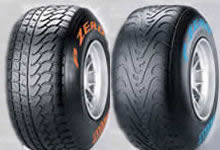 |
Pirelli heavy rain and intermediate tires |
Heavy grooved, full rain tires will come into play in case of rains. When the treads in the tires, come in contact with the track, they expand a little, due to the downforce and the weight of the car and absorb enough quantity of water to bring the tire back in contact with the track. When the water soaked area of the tire lifts off the track, it contracts again and releases the water. That’s why pure rain tires have an incredibly soft compound, they have to give as much traction as possible. In fact, the rubber is so soft that if not cooled by the water, their life expectancy can be as short as three laps. Because of the rain grooves and soft compound, the tread blocks squirm much more than dry tires, and generate much more heat. Thus tires play an important safety role by keeping the car from sliding off uncontrollably.
Another thing to consider is how to setup the car for a damp, but drying track at the start of the race. In its easiest guise it might be only fitting intermediate tires to the car. Other times, it’s the always risky choice of adding a bit more downforce on the grid. But be careful, as the pitfall is a dry track late in the race with a car having not enough top speed to be competitive.
Now, to learn more about other specific parts of set-up, please follow this links:
- Set-up in general
- Set-up of aero components and their interactions
- Set-up of mechanical components and their interactions
- Set-up for specific track characteristics
To have a complete picture of performance driving, take a look at Corners, Setup, Traction circle, Using tires, Left foot braking, braking, advanced braking, WRC braking technique, Slipstreaming, drifting, cornering, shifting, Heel and toe driving technique and steering technique articles.






